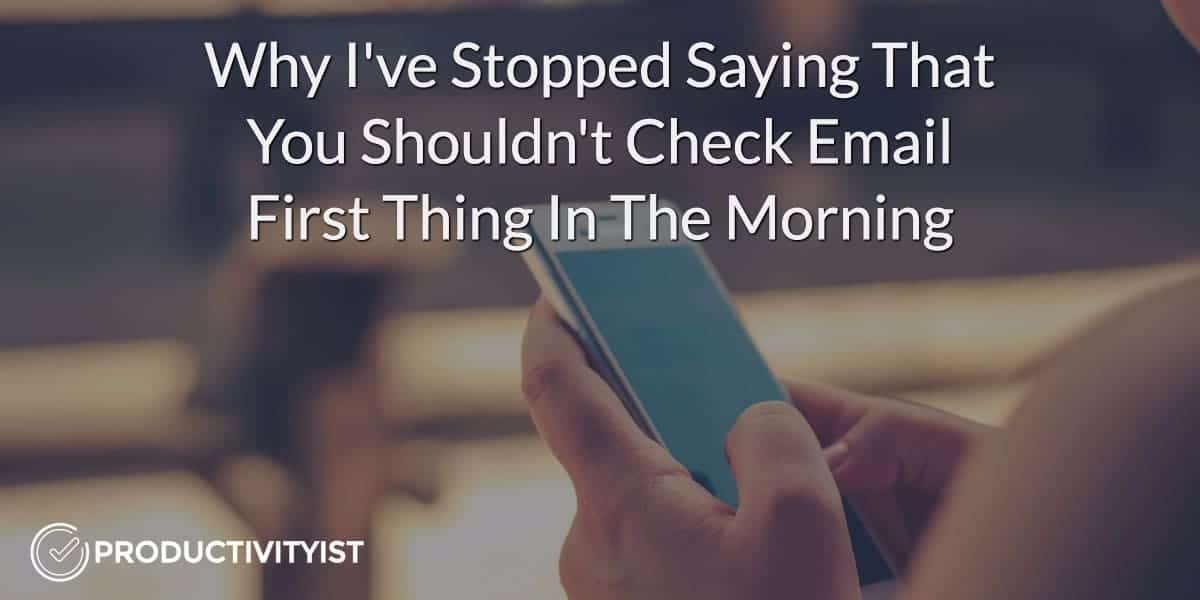
For a long time, I’ve believed that you should not check email first thing in the morning. As a matter fact, I still don’t. But the truth is, that advice won’t work for everybody.
So I’ve stopped saying it.
I think what’s more important is that you have a strategy whenever you open your email application – no matter when you do it. If a strategy is not in place, you could find yourself stuck in email all day long.
There are some simple ways to be more efficient with email. I am going to present a couple of ideas that I regularly employ that are worth considering.
First off, I have scheduled communication breaks. There are times of day where I will check social media direct messages on Twitter, Facebook, and LinkedIn. Those are online platforms where people are trying to connect with me, and they don’t have their email address handy. Essentially, that means they are people that I’ve never communicated with personally. I’m going to communicate with them differently than I would with anyone who does have my email address.
There is an episode of Buffers Science of Social podcast that talks about how social media has changed. I think that if you’re looking to figure out why I employ the strategy now, you should give this episode a listen.
If you’re not sure when is the best time of day to check your social media direct messages, look at studies that show when people are using social media most often. I’m not suggesting that you should tether the time spent each platform to the time to each platform has the most users, but maybe you can find the best time(s) to check those messages. I personally only check them once a day. Normally, if a task is born from one of those messages, I immediately added it to my task manager.
This is why it’s critical not to use your email account as a task manager. Each of us receives communication from so many different places every day. It’s best to centralize all your tasks in one place, regardless of where they are coming from.
When you use many of the extensions for popular task managers (such as Todoist) with your email (and through your browser), you can essentially put anything your receive into your task manager quickly and seamlessly.
Another thing that I do – and highly recommend – is that if you were working with people on a team, try to create a silo for that kind of communication outside of email. For example, you could use a tool like Slack to communicate internally with your colleagues.
Alternatively, many of the popular project and task management tools have communication and conversation built into those apps. You can have conversations take place in those apps instead of an email. This approach allows you to know that any internal communication is happening either within that specific communication tool or in your team’s internal task manager.
When you state your needs (based on tactics and strategies and play), it allows you to have more flexibility as to when you should check their email. By segmenting the different types of communication, you can put yourself in a position to be a more effective communicator.
If you have a small amount of email, you can check it early in the morning. Then you can categorize those types of communications and make decisions with them.
Whatever time you open up your email, please remember to have a clear strategy in place. That will help you move forward and take your productivity to the next level.